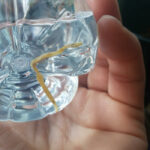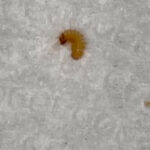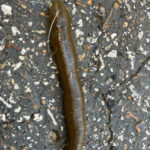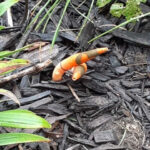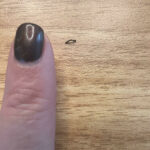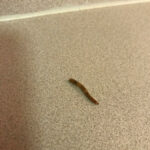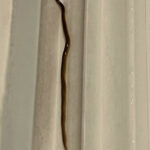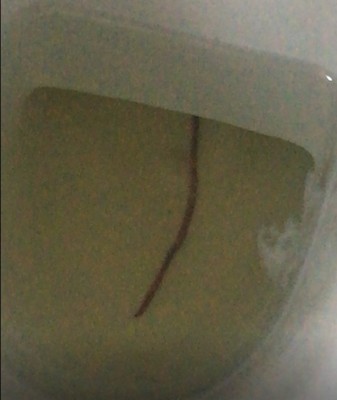Whether you’re trying to maintain an elaborate vegetable garden or a backyard full of flowers, worms are a critical part of the process. Certain worms are essential for soil maintenance, but unfortunately others can damage your plants and crops beyond repair. Just a few garden “pest” include tomato worms, fruit worms, boil worms, and many different types of inchworms. Before we discuss the different ways to control garden pests, lets discuss the benefits of “good” garden worms.
Garden worms come in all shapes and sizes and they play a major role in the survival of the earth’s fruits, vegetables, trees, and plants. Garden worms, such earthworms, are one of the largest groups of worms on the planet today. There are more than 4,400 different types of worms and of these worms there are 2,700 species of earthworm. The inchworm is one of the most popular types of earthworm.
Garden worms can be found in just about every corner of the earth. They live in trees, in bark, and under rocks as well as along rivers, near springs, and in ponds. Their favorite place to live, however, is burrowed inside the earth’s rich soil. During the winter months they burrow deep within the earth until the surface warms again during the spring. During the warm summer months, worms stay closer to the tops of soil where they create tunnels to wiggle in and out of. This process aerates the soil, meaning, it allows air and water to reach plant roots. Worms also eat organic matter, digest it, and excrete the digested material. This digested material is called “castings.” The castings are rich with phosphorus, calcium, and potassium.
Worm castings are so valuable and ten times richer in nutrients that commercial topsoil, that many gardeners and farmers use the composting method to fertilize plants and crops. Worm castings also help create channels within the layers of the earth’s soil, which helps to hold water better and keep moisture in the soil longer.
About Inchworms
The inchworm is a common type of worm that can show up just about anywhere – in gardens, on farms or in plants. So, whether you’re farmer, a gardener or an inchworm enthusiast, you may have experienced an inchworm infestation before. Unfortunately, an inchworm infestation can cause a large amount of damage to your crops, plants or garden. This might lead to the purchase of poisonous chemical remedies to treat the infestation. While these remedies may have been effective, you may have concerns about the toxic nature of these chemicals. Fortunately, there are several less toxic and non-toxic ways to control inchworm infestations.
Before we discuss how to get rid of inchworms via non-toxic methods, continue reading to learn more about the inchworm and several different types that destroy crops and plants.
Types of Inchworms
An inchworm is the larvae of moths of the family Geometridae (phylum Arthropoda, class Insecta, order Lepidoptera). This large, widely diffused group has more than 1,200 species indigenous to North America. Some inchworms (also “inch worm”) are considered average while others are considered extraordinary. Inchworms do, however, have many common characteristics. They have smooth, hairless bodies, and they typically grow up to one inch in length. Their colors run the gamut from brown and black to bright green.
Also referred to as loopers, measuring worms, and spanworms, inchworms have three pairs of legs at the front end and two to three pairs of prolegs or larval abdominal appendages at the rear. Inchworms travel by drawing their hind end forward while gripping the earth with its prolegs. They have the ability to stand erect and motionless when poked or prodded in any way.
Much like spiders, some inchworms have the ability produce thin delicate lines. In some cases, these thin lines are made of silk. It just so happens that one of the most destructive types of inchworms, called cankerworms, produces soft silk threads as they drop from trees to evade predators. Also called measuring worms, cankerworms vary in color, but their bodies consist of long horizontal stripes. Cankerworms feed on shrub foliage and tree foliage. These creatures like to hang out in apples, elms, oaks, lindens, sweetgums, and a wide variety of other shade and fruit trees.
Another type of inchworm, also called Looper and Cabbage Looper, overwinters as green to brown pupae tightly wrapped in cocoons (not webs) of white thread. In the spring, the adult moth emerges. The adult lays its eggs, typically on the surface of leaves. Once the larvae emerge, they feed for two to four weeks. Once they’ve had their fill, the larvae spin cocoons similar to the ones used during the overwinter process. The larvae prefer vegetable gardens and they eat a variety of crops including: celery, cabbage, cauliflower, radishes, Brussels sprouts, beans, parsley, broccoli, potatoes, tomatoes, and peas.
How to Get Rid of Inchworms
The following information can apply to many different types of garden pests. It is important to note that BT is effective in many cases.
Inchworms have natural predators, specifically Trichogramma wasps. Birds, yellow jackets and paper wasps also feast on inch worms, so allowing these types of animals and insects to roam free in your garden or around your crops should help control your inchworm population. Natural diseases and parasites also control inchworms. Wilt disease causes the inchworms body to rot. This usually happens late in the season. Bacillus thuringiensis, a wilt pathogen, is available to gardeners to help control infestations. This pathogen is only toxic to insects. If you would like more information about bacillus thuringiensis or to purchase products containing bacillus thuringiensis please visit: http://www.dirtworks.net/B.T.-Insecticidal-Soap.html.
All About Worms is always free, always reader-supported. Your tips via CashApp, Venmo, or Paypal are appreciated! Receipts will come from ISIPP Publishing.



